When the need for change arises, employees must evolve their skills to accommodate it. The chart below explains how HR roles have progressed to keep up to date with employees’ changing needs.
Let’s consider the evolution of today’s HR practices:
Trending HR fields, job roles, and skills needed for them
Without a doubt, a successful HR team keeps their eyes on the company’s future goals. As the pace of change accelerates, HR leaders must keep abreast of newly emerging trends in data literacy and data mining skills that can affect not just the workforce but the larger business outlook for the organization.
HRForecast analyzed around 643,000 jobs and over 6,900 skills both pre-Covid and during the Covid-19 pandemic across multiple industries globally. Based on the data we collected, we defined emerging trends, job roles, and skills in the HR domain.
HR leaders are dealing with difficult dilemmas of diversity, hybrid work models, the gig economy, and more. It is only through the consistent evolution of their roles that they will eventually resolve them in creative and effective ways. Follow this link and download our report on the trends affecting HR today and the skills HR specialists need to acquire for the future.
The evolution of HR is evident: How can you ensure your HR department is prepared? (with examples)
Apart from enhancing your HR department’s skills, you need to focus on adopting future-oriented processes for implementing changes. Defining HR-related analytics is now easy thanks to numerous software tools.
Assess your HR potential: are you ready for the future challenges?
The future HR job role is comprehensive. Right from the readiness to create a unique employee experience to building agile and flexible HR practices, tomorrow’s HR will need to be ready for it all. Take our quiz and find out how ready are you!
Below are some examples of processes you can start with:
1. Workforce analytics for overall company analysis
Workforce analytics provides accurate information that facilitates a healthy working environment and saves time, and money incurred for employee retention and turnover by the organization. The insights from analytics help you understand your company’s workforce structure and skills landscape, including skills gaps. Analytics includes tracking employee retention and attrition, the gender ratio across your workforce, or, for example, identifying which employees are most likely to leave their job after the first year of employment based on their satisfaction level.
2. People analytics for talent management processes
People analytics help you combat the challenge of keeping the right talent in your company. According to a LinkedIn survey, 70% of the global workforce who is currently employed and isn’t actively searching for a job would accept a good opportunity if it came along.
When a company starts losing high-performing employees and experiences high turnover rates or low levels of job satisfaction, it costs a lot to address these challenges.
People analytics enables HR leaders to track metrics such as talent turnover rate, dismissed employees, satisfaction levels, performance ratings, and more. It provides HR with clear insights into current talent management statistics and thereby reduces the response time.
3. Employee analytics for performance monitoring
Tracking employees’ performance and effectiveness will tell you if employees are motivated, under pressure, or need additional training to perform better. This is extremely important information for HR. For example, it helps you monitor the absenteeism rate, detect reasons for absenteeism, and take corrective measures. If a high absenteeism rate is overlooked in a company, it can cause severe financial damage.
4. Recruitment tracking for optimizing the recruiting process
Thanks to recruitment analytics solutions, every step of the recruiting process can be tracked. Recruitment is one of the critical components in HR since competition is fierce and companies must maximize employee satisfaction by offering better working conditions than competitors. HR professionals can evaluate the recruitment funnel to ensure they offer the best hiring process in the market. candidate-relationship-management systems allows HR leaders to examine different touchpoints during the recruitment process to generate quality insights.
5. Churn analytics for improving employee satisfaction
A high churn rate and low employee satisfaction is a clear sign that a company is not experiencing optimal productivity. There are many reasons for employee dissatisfaction, including uncompetitive salaries, unnecessary micromanagement, lack of recognition, and overwork. To avoid unnecessary churn in your company, it’s critical to keep employee satisfaction at stable and healthy levels. Churn analytics helps you collect data on this so you can brainstorm ideas on how to increase employees’ satisfaction.
These processes can help you lay the building blocks to set up an HR and data analytics process that meets your company’s requirements and matches your company’s capabilities. If you encounter challenges in selecting the right platforms or need assistance preparing your workforce to use them, contact us to see how we can help you set up a future-proof team to take on any challenges.
Stay up to date with our newsletter
Every month, we’ll send you a curated newsletter with our updates and the latest industry news.






























 info@hrforecast.de
info@hrforecast.de
 +49 89 215384810
+49 89 215384810






